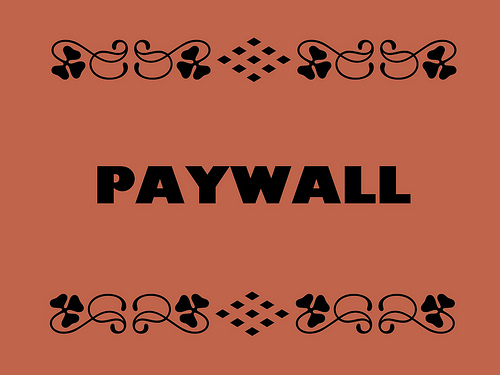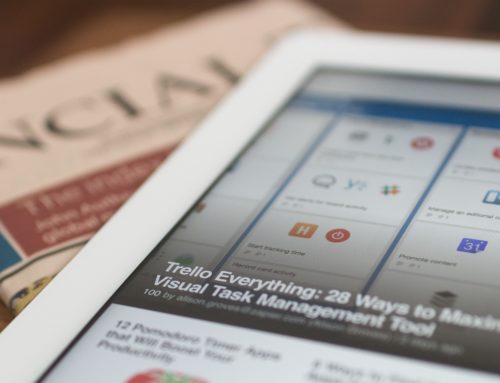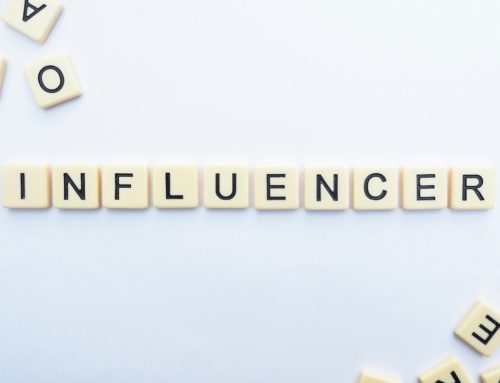 I hate paywalls with a passion. I’m disclosing that upfront as I’m really unable to be unbiased about this particular topic.
I hate paywalls with a passion. I’m disclosing that upfront as I’m really unable to be unbiased about this particular topic.
Paywalls can reduce the number of people visiting your website, potentially, even driving them to your competitors. I won’t argue that everyone should scrap paywalls; after all, you’ve always had to pay to pick up the Sunday paper.
However, the main source of revenue before the digital age was never the subscription.
It has been, and always will be, advertising.
BuzzFeed eschewed the paywall model, opting instead for “native advertising,” essentially an article or editorial and advertiser has paid to place on the site. On March 5th, the Washington Post introduced the same concept. This represents a major shift in the philosophy of mainstream news outlets. It is sure to upset some people as it could potentially blur the line between advertising and reporting done by that outlet. To that I say,
Based on the quality of journalism coming out of some major outlets, is there really that big of a difference?
Newspapers have been losing revenue for years, mainly to Internet traffic. The industry panicked and tried to shoehorn the model it had used since Gutenberg invented the printing press. In the 1990s when the Internet was still a fad, the print industry made a crucial mistake. It threw away its online inventory for pennies on the dollar as throw-ins for advertisers.
When more and more people started to put down the paper and pick up their iPad, the print industry began to realize it had started dying 10-15 years earlier, and freaked out.
When the New York Times is averaging nearly 48 million visits in a month (that’s more than 1.5 million hits a day), why would you try to turn people away? Sure, you get 10 free articles (and can get around the paywall by resetting your browser’s cookies.)
Instead, why not welcome the entire Internet in and make some cash from your advertisers?
![[EVENT]: PR Hacks for Small Biz (online)](https://shonaliburke.com/wp-content/uploads/2021/06/FB-Ad-1200x800-01-01-01-Copy-500x383.jpeg)








Sorry, folks, but this post sounds like it arrived via a time warp from 1998.
The fact is, The New York Times’ paywall, despite all the skeptics, has been a resounding success:
http://go.bloomberg.com/tech-blog/2012-12-20-the-new-york-times-paywall-is-working-better-than-anyone-had-guessed/
(Disclosure: I’ve been a subscriber for more than 6 years.)
In fact, it’s given its newsroom cheer and confidence that there will always be a New York Times because its millions of online subscribers will support its high level of journalism — and that it needn’t stoop to advertorials that are now masquerading as “native advertising.”
The Atlantic’s reputation took a nosedive when it ran a “sponsored post” (paid ad) by
Scientology. BuzzFeed’s reputation is deservedly taking a hit because it runs sponsored
content that’s sometimes indistinguishable from editorial content.
If you think there’s no difference between the two, good luck in life getting your news from infomercials.
Local news organizations will be in financial peril for the foreseeable future — because they’re not the NY Times. So publications need to experiment with multiple revenue sources in a digital era with challenging business models. Native ads (properly labeled as ads), occasional pay walls and several other approaches need to be part of the mix. Let’s celebrate any innovations that work and that don’t compromise the underlying journalism.
Content AS advertising is the coming model. I don’t despise pay walls. In fact I think it can be smart to make people pay for your best content if you aren’t a news organization. People or companies who do so know they’ll lose 90%of people but I appreciate it as a service.
The fact is that the ultimate goal of advertising is to reach an audience, community or consumer. The best way to do that now is content. For yeahs instead of solo “ads”, I just paid to have my article run. Even when people knew it was an ad, it worked much better than any ad ever has.
mikeschaffer Thanks for sharing, Mike! Now that Hava has Gangham Style down, I assume the Harlem Shake is next?
MattLaCasse I’ve avoided the Harlem Shake like the plague!
mikeschaffer WHAAA???!!! A pop culture fanatic like you?!
MattLaCasse To me, the Shake is like planking, Tebowing, owling…silly fun that I don’t have time for :)
mikeschaffer I’ll buy that. :)
MattLaCasse http://t.co/9Tgunwawjlwjl
Just fyi for all commenting on the post (thank you!) – KenMueller HowieG lisarobbinyoung (cparente I already mentioned to you), Matt LaCasse is having some weird issue with livefyre and is unable to comment here. It is absolutely BIZARRE, since everyone else can comment, but that’s why he hasn’t been by to respond (and why I tagged him on Facebook, since he *might* be able to reply there, but I’m not sure).
Btw jmatthicks any chance you or the other wonderful LF folks could figure out why this is going on for Matt?
Shonali KenMueller HowieG lisarobbinyoung cparente Matt LaCasse livefyre jmatthicks It appears I’m back in the game…at least on Firefox. So frustrating, and I apologize for the huge delay.
MattLaCasse Shonali KenMueller HowieG lisarobbinyoung cparente Matt LaCasse livefyre jmatthicks Thanks for e-mailing Matt, glad you could at least get your comment in. We’re taking a deeper look now and I’ll follow-up via e-mail.
i’m with you on this. Traditional media constantly tries to fit their square peg model into the round hole of digital media. It doesn’t work, unless you can give me something I can’t get anywhere else in any way. News can be gotten all over the place. Many options. I’m not sure that the fact something comes from the NY Times is that important any more in most cases. They need to retool and rethink the entire model.
KenMueller Exactly, Ken. Rather than try to evolve, they just cry “woe is me” throw up a paywall and call it good.
This is a simplistic post. Are you saying that online publications aren’t TRYING to sell advertising? Of course they are. But digital advertising doesn’t come close to replacing traditional print ad revenues. Why? Because the Internet has destroyed the appeal of the content bundle, which what a newspaper is.
Also, you mention “tidbits” of information people can give out about themselves. They are already doing that, since their actions are being tracked online.
Finally, your defense of native advertising seems to be “well, quality has fallen so far who cares.” Not very insightful.
It’s fair to bash media companies for failing to adapt to the Internet and social media age. But you should do it more honestly and accurately than in this piece.
cparente I think it’s a little unfair to imply Matt LaCasse is being dishonest. I know him personally (which is why he writes for WUL) and can vouch for his honesty. It’s one thing to have a different opinion, quite another to call someone’s integrity into question. Also knowing you, I’m pretty sure that is *not* what you meant to do – but just pointing out how it came across.
Btw – Matt has been having trouble commenting on the blog, which is driving him nuts. I’m not going to speak for him, because he is trying desperately hard to figure out why he can’t comment/fix any technical issues related to it – but just wanted to let you know why he hasn’t replied yet.
Shonali cparente Matt LaCasse – Shonali, that’s not at ALL what I was trying to say. Where did I say dishonest? The word was simplistic.
Real time bidding and demand side platforms are driving CPMs down, down and down. So saying just throw the gates open and monetize via advertising just doesn’t tell an accurate story.
cparente You said, and I quote: “…you should do it more honestly and accurately than in this piece.” So the obvious implication was thatMatt LaCasse was *not* honest or accurate. He’s back now, so I won’t go further, but wanted to answer your question. As I said earlier, I was fairly certain that’s not what you meant, but that’s how it came across.
Shonali cparente Matt LaCasse – definitely not what I meant, thanks for pointing out.
cparente
Thanks for your comment, Chris.
Digital advertising doesn’t come close to replacing revenues because, as I said in the article, outlets are trying to use the model that worked for them in the 1850’s. Rather than tying to pageviews, clicks, or some other modern measurement it’s still $X for X number of ads. That model is not just broken, it’s lying next to the Titanic.
I’m not following your point about “tidbits” of information comment as I didn’t say anything about that anywhere in the article.
As far as native advertising is concerned, I do think the quality of journalism as a whole has fallen. I should have expanded on my thoughts, which I’ll do so here. This actually isn’t a new concept. Advertisers have run columns in newspapers for a very long time, and they’ve been clearly marked as an advertisement. If this is something that can work in the new digital model, then go for it. Print has suffered because of a lack of creative thinking. Any option should be on the table until its proven it doesn’t work at all, or doesn’t work as well as, another option.
MattLaCasse cparente – sorry, replied above before scrolling down. Thanks for replying, and apologies for any misunderstanding. The tidbits comment refers to something you said in the article you link to, not here on WU.
I don’t follow your first point — the venerable CPM metric is tied to pageviews. And who exactly do you think is selling $X for X number of ads? Maybe Mom and Pops, certainly not big media brands.
The bidding and buying process is becoming increasingly automated, and the money is way too low to maintain the businesses as they are currently run. It’s a desperate situation, and if it was easy to solve it would have been by now.
You may hate paywalls, and who likes them? But it’s totally possible that in a digital world the old split in newspaper sub to ad revenue — let’s call it 15/85 in pre-Internet days — isn’t tenable.
howiegoldfarb Desperately trying to reply. I’m about ready to throw Chrome threw the friggin’ window. cc shonali
MattLaCasse No idea what’s going on! howiegoldfarb
shonali howiegoldfarb Me either. Cache has been cleared on both firefox and chrome…still can’t comment. #TheInterwebzHateMe
MattLaCasse shonali what did I miss? BWT I put up a comment wall 8)
I have to fully disagree Matt. The lack of paywalls is why all the newspapers have stopped doing investigative reporting and laid off thousands of reporters. Digital advertising has been the biggest failure in marketing history next to Facebook brand pages. The digital ads never brought in the money the digital agencies claimed or else why the paywall? And it has been very successful for many papers.
In the past I bought a paper and had to buy all the ads. Now I can visit a site and only have ads on the one page then leave. Even if that page was the reason I would of bought the whole paper in the past.
The revenue models without the paywall have failed. I would rather have 1 million visitors paying me $1 than 50 million visitors each paying me $0.01.
In fact I firmly believe all magazines and news should go to a pay to read model reviving what was a vibrant 4th estate. We don’t have that now and it puts citizens in danger and now news instead of having many choices to read on certain subjects we have very few.
HowieG
I think you’re right, Howie. The digital advertising model has completely failed. As I said in the article, I think that’s primarily because the print industry has been trying to use the same revenue model they were using during the Civil War. Why not charge your advertisers for pageviews? Put your ad on the NYT’s most popular story of the day at .25 cents per pageview. That’s hundreds of thousands of dollars in revenue each day. And the content remains free to users.
I feel like paywalls are a short-term solution that don’t address the core issue of increasing revenue to solve the problems you allude to. I don’t know what Newsweek/The Daily Beast’s revenue model is, but it is clearly working. Killing off the dead tree edition was a pretty big gamble, and it looks like that’s paying off so far.
What about “hybrid” paywalls – like paying for premium content? Does that have a different potential?
lisarobbinyoung I think this is where it’s going. Just around the time Matt’s post published, I got some interesting alerts – first, the Pew 2013 “state of the media” report that had some really interesting findings on media trending towards digital consumption and WOM (in terms of where someone heard news from); second, that the Washington Examiner is closing its print operation and going digital only; and finally, that the Washington Post is going to start offering tiered content online – i.e. some free, but after a certain number – I think it’s 20 stories.
Shonali lisarobbinyoung I like that idea. As cparente has said, I apparently have a very simplistic view of the situation. He has the experience in this area, so i’ll defer to his thoughts. I fail to see how closing the gates to a wider audience ends up driving more revenue, or the potential for more revenue.
Paying for premium content is an idea I’m good with. In fact, I really like ESPN’s model.